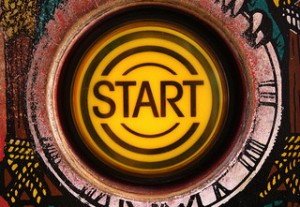Insert cliché opening about how-time-flies-and-I-should-blog-more here.
Thank you to
mbedchatblog challenge 2014 for encouraging me to maintain a blogging pulse.
The last several years I’ve tinkered with creating a more student-centred classroom, and the last few semesters I’ve really gone all in. In various high school humanities classes I’ve worked with passion projects, workshop models, and Genius Hour. I’ve done some team teaching, solicited student input on working with outcomes, and included self-evaluation as an important element of assessment. Certainly I have made messy, sometimes wonderful, often nerve-wracking mistakes, but I’ve learned from them and managed to increase student voice and choice in the process.
And then, last week, while a student was pushing and pitching alternatives to an assignment that already had many options, I caught myself thinking, “I’ve been working hard on this student-centred thing for a while now; I think I know what you need in order to learn.”
Whoa!
What did I just think?! I think I know what you need in order to learn. How did that get in there?
So, I did what many teachers before me have done–I stalled. I told the student that I’d think about it and get back to them.
Don’t get me wrong; I do believe teachers need to use their expertise in content and craft to maximize learning for everyone in class which requires planning, design, and execution, but if that planning, design, and execution does not embrace and encourage student voice and ownership, then it isn’t realizing its full potential. When I reflected on my hesitance to say, “Yes” to my student, Neil, it was clear that my reluctance was based less on his idea (it was rough, but feasible) and more on my desire for control, that sometimes monster/sometimes friend of teachers everywhere. For that moment I was more interested in a teacher-centred classroom than a student-centred one.
How can I be attentive to this kind of thinking and evaluate it with greater clarity? Here’s my plan:
- Think like a student
- Focus on outcomes
- Cut myself some slack
By “think like a student” I mean asking the question, “Why not?” If I’m to avoid inadvertently making decisions about student learning based on my own comfort or convenience, then I’m going to have to put the burden of proof on myself by asking, “Why not let, Neil do this?” If I can’t come up with a compelling, educational reason why Neil’s proposal for learning isn’t a good idea, then I should support it.
Outcomes should be the focus as students and teachers learn together. I know this is obvious, but it is so easy to shift focus to discussing an assignment or a mark instead of a demonstrable outcome. The more that student and teacher interactions involve curricular standards and outcomes, the better. Sharing that vocabulary and purpose allows for clearer communication, cooperation, and success. If Neil had made a case using course outcomes, or if outcomes had been more front and centre in my brain at the moment, my resistance to Neil’s proposal would have been easily brushed aside.
The last part of my plan, cutting myself some slack, is a dangerous one. Not enough slack and I’m on a stress leave with a seasonal affective disorder cherry on top by mid semester. Too much slack and I’m right back to where I started, obliviously making classroom decisions that over emphasize my control rather than supporting student learning. The sweet spot between requires admitting that sometimes a bit of restriction or uniformity in class is okay. Sometimes students need to be challenged by teachers in ways they won’t challenge themselves. Sometimes I’ll have to admit to students that they have a good idea, but that I’m not sure I’m up to the challenge of managing or assessing it with the time and tools available. Perhaps revealing that reality and my humanity will inspire them to help find new tools and new assessments. At very least it will be part of honest relationship and community in the classroom.
That’s my plan, squeezed off from the hip at the end of February. I’m sure to be missing something, so I’d love to hear from other teachers about how they handle sharing the control and ownership of learning with students. Surely the collaboration and support of colleagues is part of the answer, but that’s a topic for another day. Stay warm.








